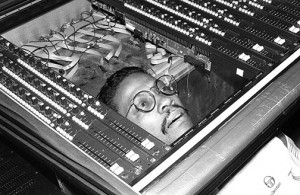Here is another interview from my vaults, previously published in 1989 in Mix magazine and in Japan’s Sound & Recording. Clocking in at 4000 words, much of this interview has never been seen. This year Herbie celebrates his 70th Birthday, and is still going strong.
Herbie Hancock
Cool Fusion
by Mr. Bonzai
©1989, all rights reserved
no reproduction without written permission from mrbonzai (at) mrbonzai.com
Both Picasso and Hancock mastered traditional forms and styles at an early age, gained critical acclaim, and went on to shock their followers with innovation and abstraction. Picasso used found objects in his collage and sculpture; Hancock uses concrete sounds and found samples in his music. The rules were broken as the rebels drew from international sources and freely mixed. Both artists make us rethink our ideas of reality and open our doors of perception, yet they both make us feel comfortable in the twilight zone between art and life.
Barely out of his teens, Herbie Hancock became a leading force in the heyday of 60’s jazz. The jazz crowd is a tough audience and he won them over, in his work with Donald Byrd, Miles Davis, and the cream of the serious contenders. Compositions such as “Watermelon Man†became worldwide standards. His first film score was for Antonioni’s 1967 breakthrough Blow-Up. Herbie came on strong, then took jazz to new levels of cool fusion. In 1973, his Headhunters album defined jazz funk, and in following years he has swung easily with his old fans and new. The Eighties earned a best original score Oscar for his ‘Round Midnight music and a best concept video MTV award for “Rockitâ€. A master with many forms, he has consistently taken the newest technology and made it his own.
If you would like to learn more about the incredible ascent of Berklee College of Music scholarship honoree Herbie Hancock, click here: Hancock, Herbie_MrB_1989.
Don’t forget to check out my Berklee College of Music berkleemusic blog at:Â http://mrbonzai.berkleemusicblogs.com/

You must log in to post a comment.